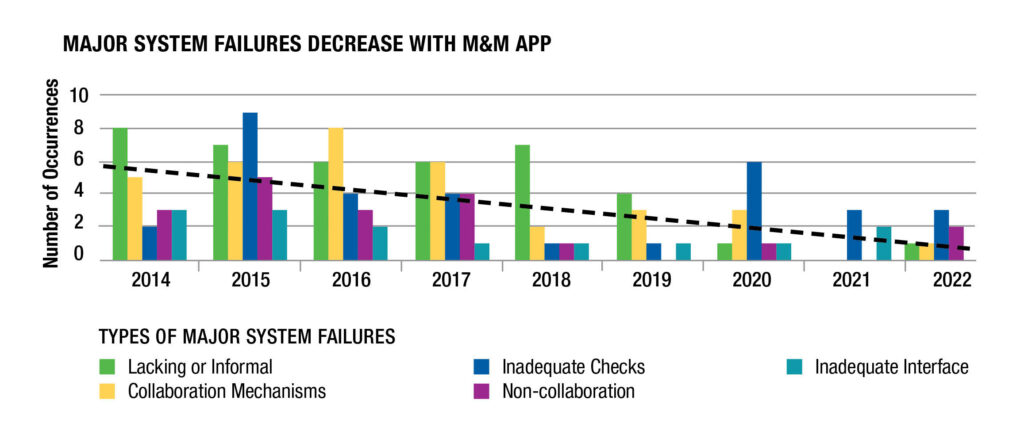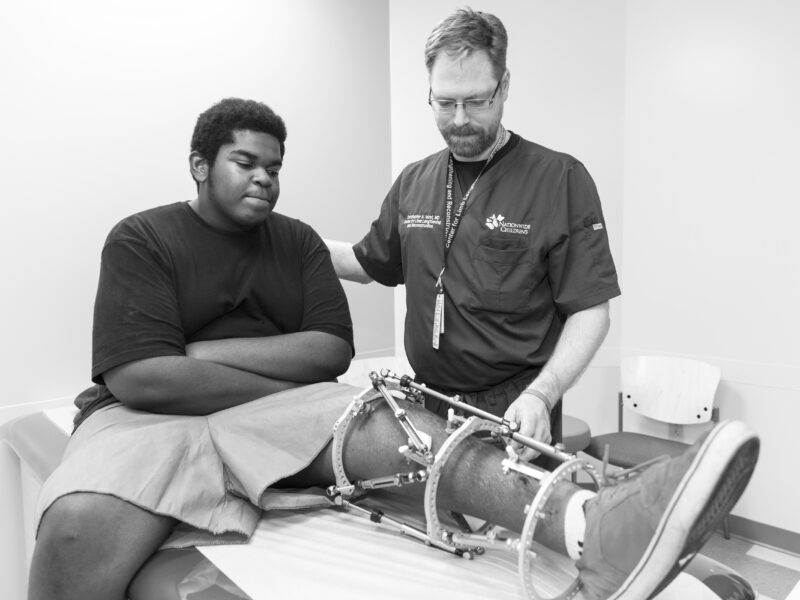Turning Complications into Fuel for a New Approach to Better Outcomes
Turning Complications into Fuel for a New Approach to Better Outcomes https://pediatricsnationwide.org/wp-content/uploads/2024/04/AdobeStock_417156735_edited-cropped-1024x418.jpg 1024 418 Alaina Doklovic Alaina Doklovic https://pediatricsnationwide.org/wp-content/uploads/2023/11/100923RH0019-e1699635391623.jpg- April 19, 2024
- Alaina Doklovic

A new web application enhances Morbidity and Mortality data storage and actively improves patient care.
Morbidity and Mortality (M&M) Conferences are mandated meetings that occur regularly at all academic medical centers and are powerful opportunities for learning and reflection. These conferences have been around for decades and provide opportunities to learn from medical errors, complications and unanticipated outcomes that may occur both individually and systemically. The goal is to continuously strive to improve performance and clinical outcomes.

Gail Besner, MD
“Complications are inevitable, and we are never going to totally eliminate them,” says Gail Besner, MD, chief of Pediatric Surgery at Nationwide Children’s Hospital. “But our surgical team at Nationwide Children’s is truly invested in making sure that we do absolutely everything possible to prevent the same complication from happening to another child. To do that, we need to transparently present every complication in an open multidisciplinary forum to discuss errors that occurred to improve patient care in the future.”
Ten years ago, Dr. Besner’s team at Nationwide Children’s developed a quality improvement (QI)-based M&M Conference to prioritize the discussion of individual and system failures and develop “action items” for tangible ways to implement the improvements discussed during the conferences. In 2017, they published the results of that work in the Journal of the American College of Surgeons.
However, because of a reliance on individual documents to store M&M data, a more effective method needed to be put into place to better assess results and reduce system errors.
In 2018, Dr. Besner worked with Joshua Hampl, now lead business intelligence developer in the Department of Information Services at Nationwide Children’s, to develop a secure electronic health record (EHR)-integrated web application (web app). This application would not only store all M&M data electronically in one place but also create a method of assigning and monitoring the completion of action items along the way.
How It Works
During an M&M Conference, multiple medical personnel and trainees gather to identify and discuss complications that occurred. The group decides which complications are treatable and assigns changes to prevent the error from happening again. These changes are called “action items.”
Action items could include initiating a new policy or procedure, fixing one that is already in place, or removing barriers in place for medical personnel. With all data now stored in the web application, the QI Team has continual access to the plans needed to remedy the error. As each action item is created, a person will be assigned to make sure these changes are actually implemented. The database will automatically send out bi-weekly emails to remind the owner of the action item deadline, keeping every error type on track and monitored.
In their most recent study currently under review in the Journal of Pediatric Surgery, Dr. Besner and her team report that this method of storing M&M data with the web app dramatically improved the review of M&M data, leading to a 67% decrease of the most common system complications and failures. The QI initiative also significantly reduced the number of open action items per month, and the time to closure of action items. This web app not only enhanced the storage and tracking of M&M data but had a real and tangible impact on improving the quality of patient care.
 Moving Forward
Moving Forward
With the team’s initial success, they hope to expand the application’s usage beyond the walls of Nationwide Children’s and into hospitals and academic institutions throughout the United States.
“Each year, multiple hospitals across the United States ask about our process. We are taking steps to make it sharable for those who want to implement it in their institutions. It has been incredibly gratifying to see the improvements for children here, and to see that expand beyond our walls will be just wonderful,” says Dr. Besner.
In 2024, Dr. Besner and her team plan to start testing their application at select hospitals throughout the United States. Hampl recently obtained a grant from the Office of Technology Commercialization at Nationwide Children’s to transfer the application to an architecture suitable for external deployment.
“It’s rewarding to see the operational impact that our application has facilitated over the past 4 years — action items result in changes to policy and protocol, trends in failure modes are identified and escalated to secondary or tertiary review, and individuals are able to easily search and find what they need. This kind of improvement for patients throughout the United States will be extraordinary,” says Hampl.
This article also appears in the Spring/Summer 2024 print issue. Download the full issue.
References:
- Cromeens BP, Lisciandro RE, Brilli RJ, Askegard-Giesmann JR, Kenney BD, Besner GE. Identifying adverse events in pediatric surgery: comparing morbidity and mortality conference with the NSQIP-Pediatric system. Journal of the American College of Surgeons. 2017 May;224(5):945-953.
- Sajankila N, Javens T, Hampl J, Coleman C, Murnane J, Kenney BD, Besner GE. An electronic health record-integrated web application augments a QI-directed Morbidity & Mortality Conference and improves quality of care. Journal of Pediatric Surgery. 2024 Feb 16:S0022-3468(24)00091-5
Image credits: Adobe Stock (header); Nationwide Children’s (portrait)
About the author
Alaina Doklovic is a Marketing Specialist for Research Communications at Nationwide Children’s Hospital. She received her BS in medical anthropology and English from The Ohio State University. Her passions for science and health, combined with her desire to help others, motivated her to pursue a career in which she could actively help improve patient outcomes and scientific research through writing.
-
Alaina Doklovichttps://pediatricsnationwide.org/author/alaina-doklovic/September 19, 2023
-
Alaina Doklovichttps://pediatricsnationwide.org/author/alaina-doklovic/January 22, 2024
-
Alaina Doklovichttps://pediatricsnationwide.org/author/alaina-doklovic/February 12, 2024
-
Alaina Doklovichttps://pediatricsnationwide.org/author/alaina-doklovic/February 19, 2024








